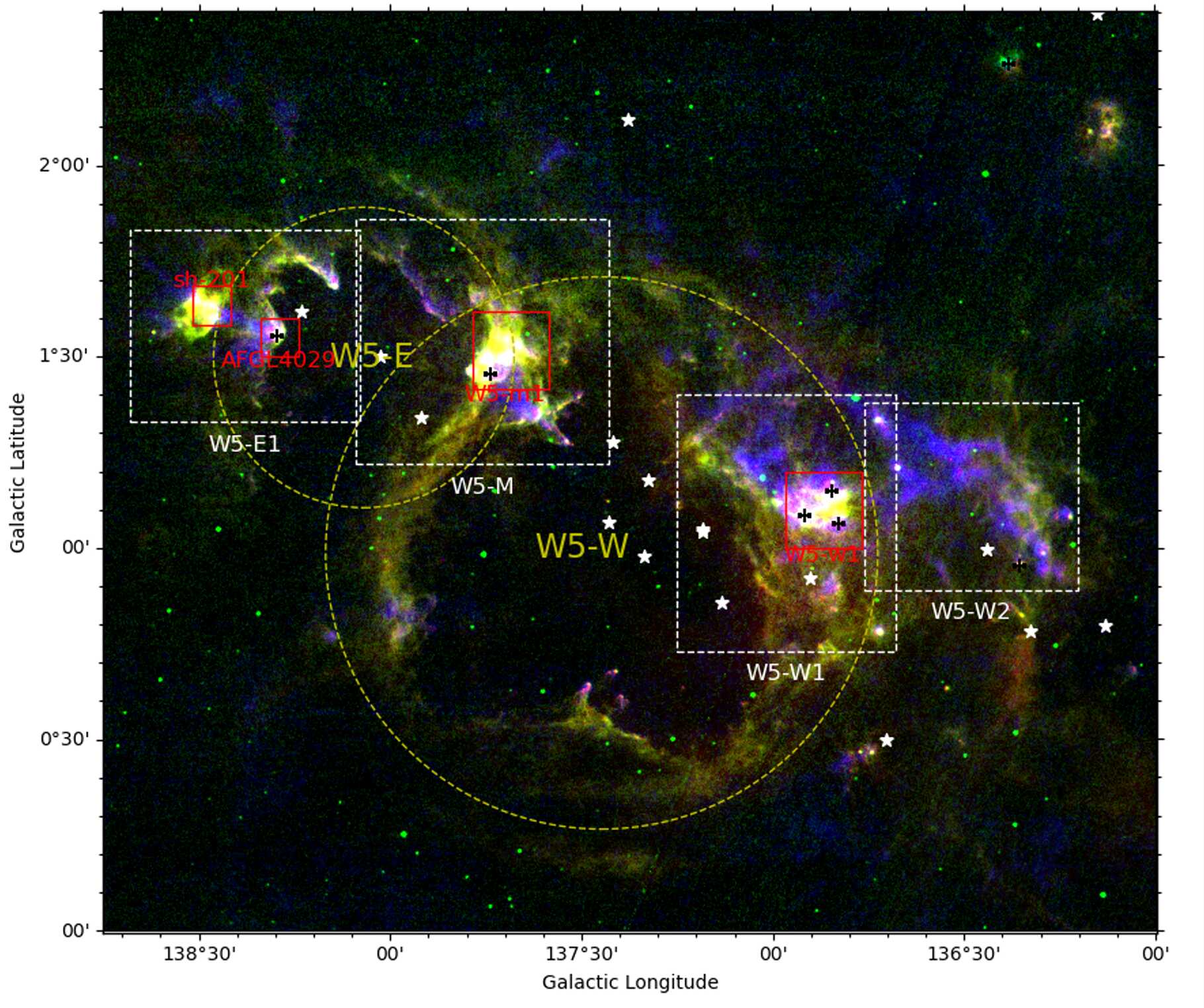Sep 24, 2024
Study Reveals Feedback Effects on Massive Star Formation from W5 Molecular Cloud Complexes
Researchers from Xinjiang Astronomical Observatory conducted an in-depth study of two adjacent massive HII regions —W5 molecular cloud complexes on the Perseus Arm of the Milky Way. By conducting observations of CO (1-0) and NH3, the re...Recently, PhD student SHEN Hailiang from the Star Formation and Evolution Group at the Xinjiang Astronomical Observatory of the Chinese Academy of Sciences, under the guidance of his supervisor, Prof.Jarken ESIMBEK, conducted an in-depth...



